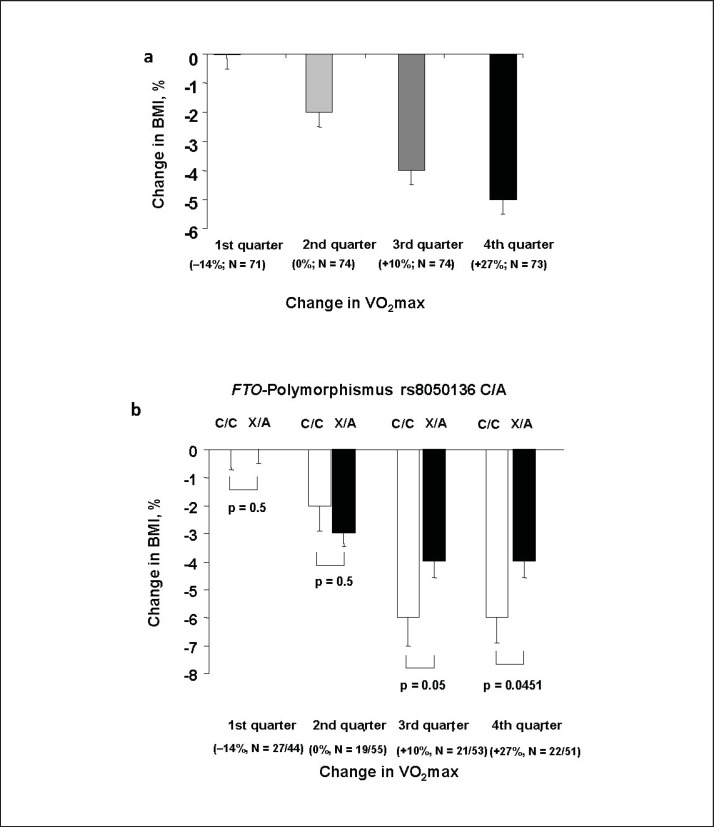Fig. 1.
a Interaction between changes in cardiorespiratory fitness and loss of body weight. Displayed are relative changes in BMI during 9 months of lifestyle intervention after stratification of participants according to their change in VO2max. 1st quartile comprised of subjects that even had a deterioration of VO2max. From the 2nd to the 4th quartile the extend of changes in VO2max increased consistently. Change in BMI significantly differed between groups (p < 0.0001, adj. gender, age, BMI at baseline). Bars represent means ± SEM. b FTO genotype determines the loss of body weight only in participants who strongly improved their cardiorespiratory fitness. The relationship between improvement in fitness and weight loss significantly interacted with FTO genotype (pANCOVA = 0.0042, adjusted for gender, age, and baseline BMI). Displayed are relative changes in BMI during 9 months of lifestyle intervention after stratification of participants according to their change in VO2max. 1st quartile comprised of subjects that even had a deterioration of VO2max. From the 2nd to the 4th quartile the extend of changes in VO2max increased consistently. White bars are FTO non-risk allele carriers, while black bars are obesity risk allele carriers. Obesity risk allele carriers lost significantly less weight in the upper two quartiles. Genotype differences were tested in each group separately in multivariate linear regression models adjusted for gender, age and baseline BMI. Bars represent means ± SE.

